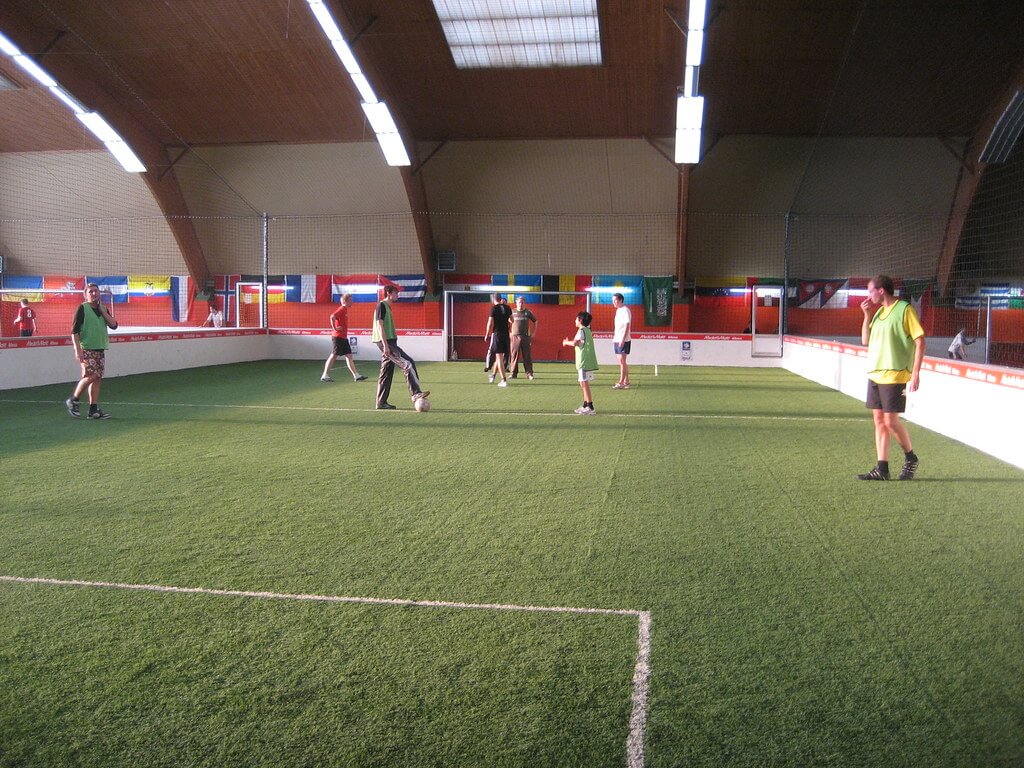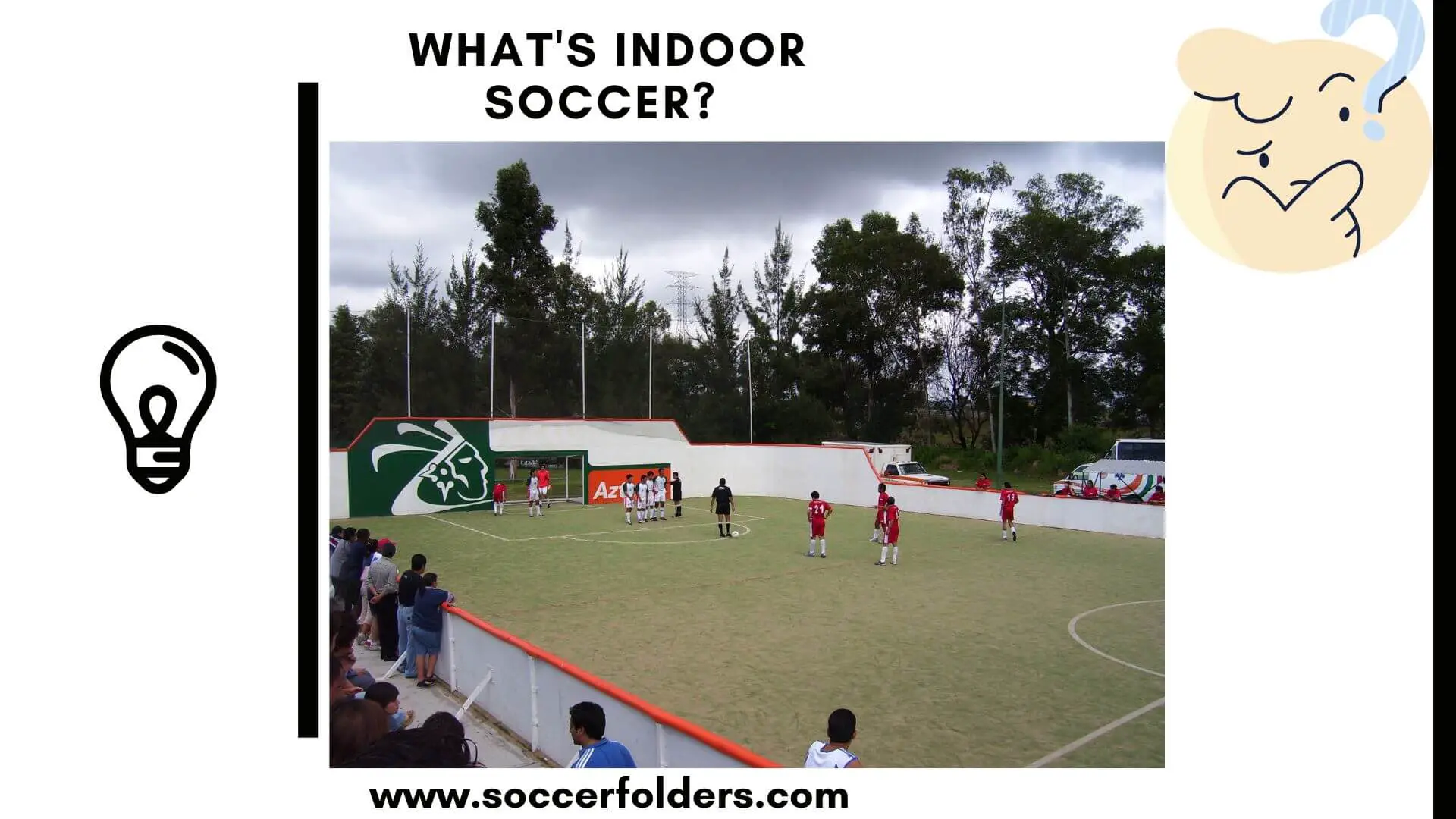Are you ready to experience the excitement of soccer in a whole new way? Look no further than indoor soccer!
Unlike its outdoor counterpart, indoor soccer is a fast-paced, action-packed sport that brings out the best in players and creates an electrifying atmosphere for fans.
In this in-depth guide, we’ll delve into the captivating world of indoor soccer, exploring its origins, rules, unique features, and the sheer thrill it offers to both participants and spectators alike.
So, grab your cleats, lace up, and let’s dive into this exhilarating indoor adventure!
Table of Contents
What’s Indoor Soccer?
Indoor soccer is a thrilling variant of the sport played in an enclosed space. With a smaller field and fewer players, it’s fast-paced and intense, emphasizing quick reflexes, precise ball control, and non-stop action.
Indoor soccer and futsal are two related but distinct sports. While indoor soccer is often referred to as futsal in some regions, they have subtle differences in terms of rules, field size, and equipment. In the context of this article, we’ll focus on indoor soccer as a separate variation.
If you want, you can read more about the difference between Futsal and Indoor soccer here.
The Origins of Indoor Soccer
The real birth of modern indoor soccer was in 1974 with the first airing of a game between the North American Soccer League and the Soviet Red Army on ABC’s Wide World of Sports.
So, Indoor soccer traces its roots back to 1974. This fast-paced variation of the world’s most beloved sport was initially developed to keep players fit during the off-season.
However, its popularity quickly soared, spreading across South America and the world. Today, indoor soccer has become a global phenomenon, captivating players of all ages and skill levels.
==>> You can also read: When was Futsal invented?
The Unique Characteristics of Indoor Soccer
Unlike traditional outdoor soccer, indoor soccer is played on a smaller field with fewer players.

The smaller field size fosters a more intense and dynamic style of play, emphasizing quick reflexes, precise ball control, and lightning-fast decision-making.
With the absence of touchlines, the ball remains in play at all times, promoting continuous action and relentless competition. Keep in mind that most countries in Europe play indoor soccer with a touchline.
The enclosed space creates an electrifying atmosphere that keeps players and spectators on the edge of their seats.
How to Play Indoor Soccer?
Playing indoor soccer requires a combination of skill, strategy, and adaptability. Here are some essential tips to enhance your indoor soccer experience:
a. Master Ball Control: The smaller field size in indoor soccer demands precise ball control. Practice your dribbling skills to manoeuvre through tight spaces and maintain possession under pressure. Develop a light touch to keep the ball close and make quick turns.
b. Communication and Teamwork: Effective communication and teamwork are crucial in indoor soccer. Constantly communicate with your teammates, providing them with information on opponent positions and available passing options. Utilize quick, accurate passes to maintain fluidity and create scoring opportunities.
c. Utilize the Walls: Unlike outdoor soccer, indoor soccer allows the use of walls as an additional element in gameplay. Learn to use the walls strategically, using them for rebound passes or to outmanoeuvre opponents. However, be cautious as the walls can be a double-edged sword, potentially giving opponents an advantage as well. Keep in mind that nowadays, most indoor soccer prefer not to use walls, this is the case for European countries.
d. Speed and Agility: Indoor soccer is a fast-paced game that requires speed and agility. Work on improving your acceleration, change of direction, and overall fitness level. This will help you keep up with the tempo of the game and make timely runs to create scoring chances.
e. Shot Accuracy: With limited space and quick transitions, opportunities to shoot on a goal can arise suddenly. Focus on developing accurate shots with both power and finesse. Practice shooting from various angles and positions to increase your chances of scoring.
Remember, the more you play and practice, the better you’ll become at indoor soccer. Embrace the unique challenges and dynamics of the game, and don’t forget to have fun and enjoy the exhilarating experience!
Rules and Gameplay
Indoor soccer follows a set of rules designed to encourage skilful play and foster an exciting environment.
Typically played with five players on each team, including a goalkeeper, the game places great emphasis on technique, creativity, and teamwork.
The absence of throw-ins encourages players to develop their ball control skills, as kick-ins are used instead.
Additionally, the reduced number of players per team creates more space and opportunities for skilful dribbling, precise passing, and lightning-quick shots on goal.
==>> You can also read the best indoor soccer formations for 7v7, 6v6, and 5v5 here.
The Indoor Soccer Experience

Playing indoor soccer is an immersive experience like no other.
The adrenaline rush that accompanies every touch of the ball, the thunderous cheers of the crowd, and the electric energy emanating from the fast-paced action make indoor soccer a truly captivating sport.
Whether you’re a seasoned outdoor player looking for a new challenge or a beginner eager to embrace the world of soccer, indoor soccer offers an inclusive and welcoming environment for all skill levels.
Health Benefits of Indoor Soccer
Beyond the thrill and excitement, indoor soccer also offers numerous health benefits.
The intense nature of the game provides an excellent cardiovascular workout, boosting endurance and stamina.
The rapid changes in direction and speed promote agility and coordination.
Additionally, the emphasis on quick decision-making sharpens cognitive skills and enhances strategic thinking.
It’s a holistic workout that combines physical fitness with mental agility, making indoor soccer a fantastic option for those seeking an engaging and rewarding exercise regimen.
Indoor Soccer Gear

When it comes to gear, indoor soccer requires minimal equipment, making it accessible to everyone.
The essentials include soccer-specific shoes for optimum traction on indoor surfaces, comfortable athletic wear, shin guards, and a suitable soccer ball.
Remember, wearing the right gear not only enhances your performance but also ensures your safety and enjoyment of the game.
Final Thoughts
Indoor soccer is a captivating sport that brings together athleticism, skill, and pure excitement.
Whether you’re a player seeking a fast-paced challenge or a fan looking for an exhilarating sports experience, indoor soccer offers something for everyone.
Its origins, unique characteristics, and immersive gameplay make it an ideal choice for those who crave the thrill of soccer in a dynamic and electrifying environment.
The combination of athleticism, skill, and pure excitement makes indoor soccer a truly captivating sport. It provides a thrilling challenge for players and an exhilarating experience for fans.
Whether you’re a seasoned soccer enthusiast or new to the game, indoor soccer offers an inclusive and vibrant community that welcomes all.
So, step onto the indoor pitch, feel the rush of adrenaline, and immerse yourself in the dynamic and electrifying world of indoor soccer. Get ready to create unforgettable moments and forge lifelong memories in a sport that never fails to ignite passion and leave you craving for more.
You can also read the difference between indoor and outdoor soccer here.


